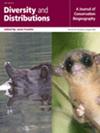Investigating the role of trade in elucidating the introductions of insect plant pests via specific pathways over the past two decades to inform future plant pest introduction risks.
Global.
We analysed global data on the first findings of plant pests and the global trade network, assessing which network metrics explained the cumulative introductions per country. We compared in-degree (i.e., the number of countries a focal country imports from) and out-degree (i.e., the number of countries a focal country exports to) across different pathways and investigated intraregional trade saturation for each country within different continents. We explored the relationship between the risk of spreading based on the trade network structure and the temporal sequence of realised introductions.
In-degree was the major driver of the introduction of alien plant pests across all pathways. For several regions such as Europe and Asia, countries with extensive imports and regional trade connections serve as trade hubs connecting numerous countries belonging to the same geographical region. The saturation of the intra-regional routes reflected the less restrictive regional trade agreements and played a pivotal role in the spread of exotic pests within the region. We found untapped potential for opening new trade routes in Africa and Oceania.
The study emphasises the potential increase in multiple introductions driven by a few key countries, warranting intensified surveillance efforts. Opening new commercial routes poses higher risks than increasing the total volume of trade from the same partners as it might open the dense international trade network to a new pool of potential pests. Incorporating high-resolution trade data and tracking data (i.e., from entry to final destination) is crucial and can enhance risk mapping precision to reduce future alien plant pest introductions.



